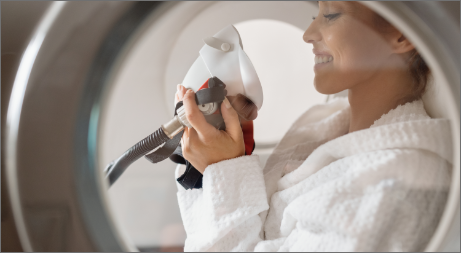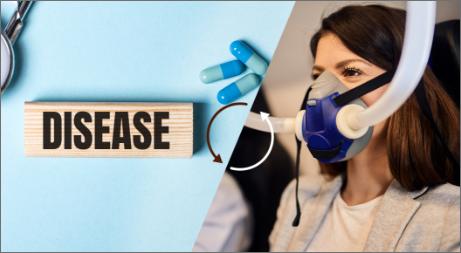Discover the transformative potential of Hyperbaric Oxygen Therapy (HBOT) at our cutting-edge facility in Rajiv Chowk, Gurgaon, India. Designed to combat insidious conditions such as gangrene, this therapeutic intervention harnesses the innate power of oxygen in a hyperbaric chamber, facilitating enhanced healing and recovery. Experience a paradigm shift in wound care, where safe and effective treatment meets the promise of restored vitality, empowering your journey to health. Embrace innovation today.
Hyperbaric oxygen therapy: a transformative health initiative.
Hyperbaric Oxygen Therapy (HBOT) is a specialized medical treatment where patients breathe 100% oxygen inside a pressurized chamber, significantly enhancing oxygen delivery to body tissues. Originally developed for treating decompression sickness in divers, HBOT has evolved to address a variety of medical conditions, including chronic wounds, radiation injuries, and carbon monoxide poisoning. The therapy involves exposing patients to pressures 1.5 to 3 times greater than normal atmospheric pressure, allowing oxygen to dissolve more effectively into the blood plasma. This high-oxygen environment accelerates tissue repair, reduces inflammation, and stimulates the growth of new blood vessels. Sessions typically last about an hour, during which patients can relax or even sleep inside the chamber. HBOT’s unique capacity to deliver oxygen at levels far beyond normal intake makes it a powerful and versatile tool in modern medicine, providing significant therapeutic benefits and fostering recovery in conditions that are otherwise difficult to treat.


A meticulous examination of gangrene unveils its insidious nature
Gangrene is a serious medical condition that occurs when body tissue dies due to a lack of blood flow or a severe bacterial infection. It commonly affects the extremities, such as toes, fingers, and limbs, but can also impact internal organs. There are two main types: dry gangrene, resulting from chronic disease like diabetes or arteriosclerosis, and wet gangrene, often caused by bacterial infections following injuries or surgeries. Symptoms include severe pain, discoloration of the skin to black or green, foul-smelling discharge, and numbness. Immediate medical intervention is crucial and may involve antibiotics, surgical removal of dead tissue, or hyperbaric oxygen therapy to increase oxygen supply to affected areas. In severe cases, amputation might be necessary to prevent the spread of infection. Preventive measures include managing underlying conditions, maintaining good hygiene, and seeking prompt treatment for wounds to reduce the risk of developing gangrene.
Hyperbaric Oxygen Therapy mitigates Gangrene through enhanced HBOT efficacy.
Hyperbaric Oxygen Therapy (HBOT) revolutionizes gangrene treatment by immersing patients in a high-pressure chamber where they breathe 100% oxygen. This pressurized environment, typically 1.5 to 3 times normal atmospheric pressure, allows oxygen to saturate the blood plasma far beyond typical levels. This oxygen-rich plasma can reach deep into damaged tissues, even those with poor blood flow. The increased oxygen supply halts the proliferation of anaerobic bacteria that thrive in low-oxygen environments, effectively curbing the infection. Additionally, HBOT boosts the body's immune response, enhances the activity of white blood cells, and promotes the growth of new blood vessels and connective tissue. This not only accelerates the healing process but also helps to salvage tissues that might otherwise be lost. By dramatically improving oxygen delivery, HBOT can reduce the necessity for amputations and provide a crucial, life-saving intervention for gangrene patients.

Hyperbaric Oxygen Therapy alleviates gangrene through enhanced oxygenation promoting tissue restoration
Hyperbaric Oxygen Therapy (HBOT) stands as a transformative treatment for gangrene, blending advanced medical technology with the fundamental healing power of oxygen. Its ability to saturate tissues with high levels of oxygen in a pressurized environment uniquely positions HBOT to combat the severe bacterial infections and tissue death characteristic of gangrene. This therapy not only inhibits the growth of harmful bacteria but also revitalizes damaged areas by enhancing the body's natural healing mechanisms, including immune response and new tissue growth. The profound impact of HBOT extends beyond immediate infection control, offering long-term benefits by significantly reducing the risk of amputation and improving overall patient outcomes. As we continue to explore and understand its full potential, HBOT redefines the possibilities in the treatment of gangrene, turning what was once a dire diagnosis into a manageable and often reversible condition, providing new hope and healing to affected individuals.
References
https://pubmed.ncbi.nlm.nih.gov/33642333/
